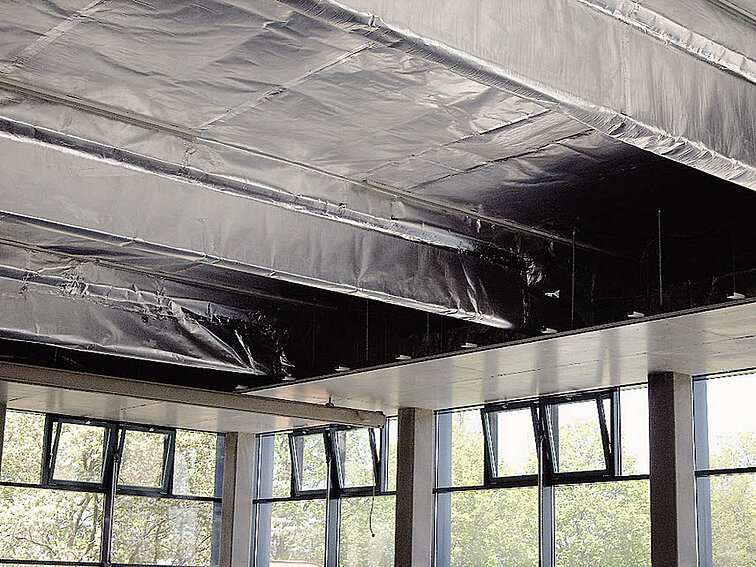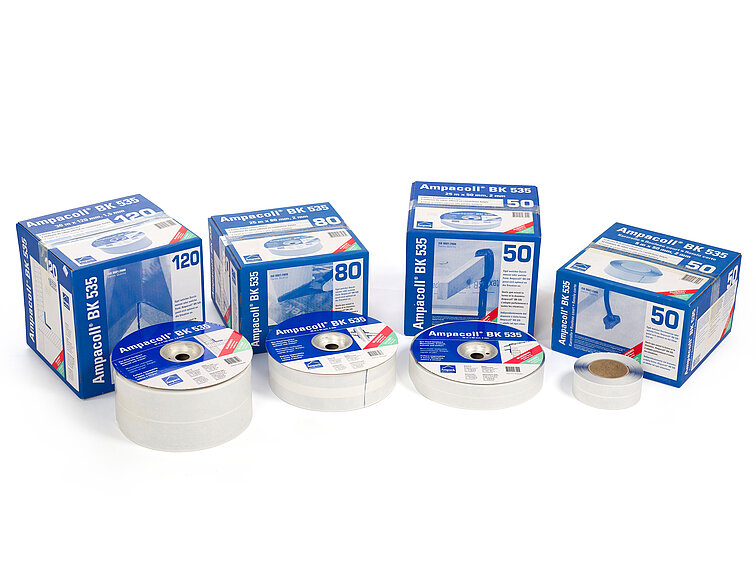Airtightness with rafter installation

Rafter insulation has become increasingly important - for houses where a high standard of thermal insulation is the target it has become an absolute must.
In this type of construction too, an airtight level must be planned and executed on the warm side of the thermal insulation. There are two difficulties here: First of all, the airtight membranes must be laid during or shortly after erection. They are exposed to the weather and severely tested during the construction phase. Therefore not just any vapour retardant can be used here. It is important that stable products with a sufficient natural weathering period are employed here.
Secondly, the membranes are generally laid above and / or outside of the supporting structure and must therefore be joined to the membranes in the walls. In normal circumstances for interior finishing an airtight level is recommended, but here it is absolutely crucial. Precise, well thought out details which take into account the assembly sequence are a sine qua non for Ampack. In the case of rafter insulation it is necessary to look extremely closely at the processing of the membrane in the area of the eave connection, in the area of the gable wall connection and in the area of any possible dormer window. Also, the correct connection to the gable window must be ensured.

Formwork strips
Find out moreVariable diffusion
Characteristics of Ampatex Resano and Ampatex Variano
In contrast to conventional vapour seals, variable-diffusion vapour seals have variable-diffusion resistance sD, which adjusts itself to the moisture in the environment. In the case of a high relative level of air humidity – e.g. in summer – the sD value sinks and the vapour seal becomes more vapour-permeable. In the case of a low relative level of air humidity – e.g. in winter – the sD value rises and the vapour seal becomes less vapour-permeable.
In specific terms, the change in the sD value means that a building with unscheduled damp permeation for example, can dry out inwards over a longer period of time and given the right conditions. This means that the building does not suffer any damage.
In practice, a change in the sD value of between approx. 40 % and 60 % in the relative air humidity is decisive (see diagram above). In a living space that sees normal amounts of use the relative humidity is not under 40 %. For constructions with a constantly high level of humidity (> 60 %) – such as saunas, hotel kitchens and indoor swimming pools – the use of a variable-diffusion vapour seal is essential (see implementation matrix). In constructions with existing ventilation or a diffusive external layer – where conventional vapour seals such as the Ampatex DB 90 are used – a variablediffusion vapour seal such as the Ampatex Resano can also be used. This vapour seal is also ideal for roof renovations from the outside.
Requirements
General requirements for theimplementation of Ampatex Resano
- Fully functional airtight level
- Standard use of living space
Additional requirements for processing with challenging technical implementation such as humidity (e.g. flat roof).
- Re-drying must not be hindered by panelling.
- Sufficient insulation thickness, compact and with no voids or spaces.
- Orientation, position and environment of the building component: Shade, also partial shade, e.g. by trees, solar power systems, nearby buildings and other aspects such as on the waterside, positions exposed to the weather are all problematic and must be examined on a case by case basis.
- Increased processing controls (e.g. test using the differential pressure drop method)









